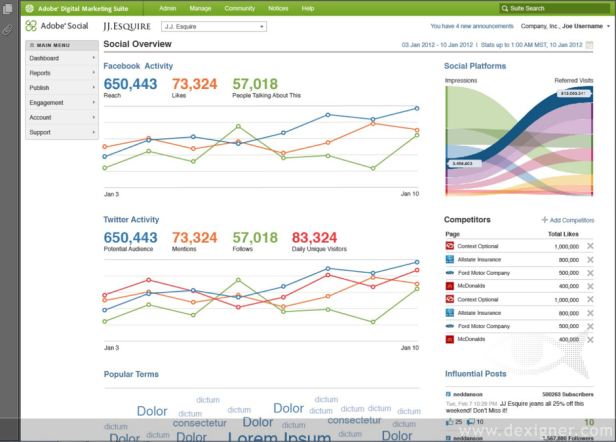As social media networks are still relatively new and being experimented on by firms, it is considered part of the systems of innovation layer in the Gartner’s Pace Layers. It is gradually becoming part of enterprise architecture with increasing integration with enterprise applications through the use of ERPs and CRMs. This brings us back to the importance of integration and doing integration properly – otherwise you could end up with a “spaghetti mess”! In particular, it is not uncommon to see messy current state diagrams in use within industry today – applications could be from different vendors and disconnected from each other, as well as completely unknown to users with high levels of difficulty to be searched down!
This brings the discussion down to the different types of social media network applications used in enterprise, of which there are 9 types used to manage customer relationships.
- Social publishing
- Social media engagement
- Social analytics
- External community software
- Internal community software
- Contact enrichment
- Product review
- Social network selling
- Product advocacy
In particular, with the widespread use of social media amongst people of all ages and the importance of analysing activity across a business’s page, a deeper insight into social publishing will help us to understand possible enterprise use of these applications.
An example of Social Publishing
Social publishing is used in marketing to help to coordinate messages, campaigns and alerts sent to various social networks. It can be additionally used to aid with social media analysis by analysing any content published, and campaigns. Some well known examples in industry are Adobe Social, Salesforce Social Studio, and Sprinklr.
A Deeper Look into Adobe Social
Adobe defines their product Adobe Social as a “social management platform that ties every piece of data to your bottom line. Beyond just the likes and follows, manage the deep relationship between your customers’ sentiments and your business goals.” It also highlights Social as a tool to manage content from multiple social networks in one place, measure the impact of any content published and through the overall Adobe Marketing Cloud that Adobe Social is part of to help improve targeting and optimise customer experience.
 A screenshot of the Adobe Social layout
A screenshot of the Adobe Social layout
As you can see above, the analysis that can be done through Social is specific to each social media platform and makes it easy to see individual metrics such as likes, reach and unique visitors. These metrics can then be used to help measure ROI, as well as to easily act when required.
What are your thoughts on the applications of social publishing in companies?
Sources
- Buchanan, S. (2012). Adobe gets Social, get ready to analyse!. [online] Traffika. Available at: https://www.traffika.com.au/blog/adobe-gets-social-get-ready-to-analyse/ [Accessed 1 Apr. 2016].

Social media networks are definitely a very recent trend. I didn’t realise there were so many types of social media network applications used in enterprise! As the widespread use of social media grows, I can see how social management platforms such as Adobe Social would take on an increasingly important role in improving targeting and optimising customer experience.
LikeLike
I’m glad you’ve found this informative! Social management platforms have been on the rise as of late, and it’s understandable considering the sheer amount of social networks that are available today, and their importance for businesses.
LikeLike